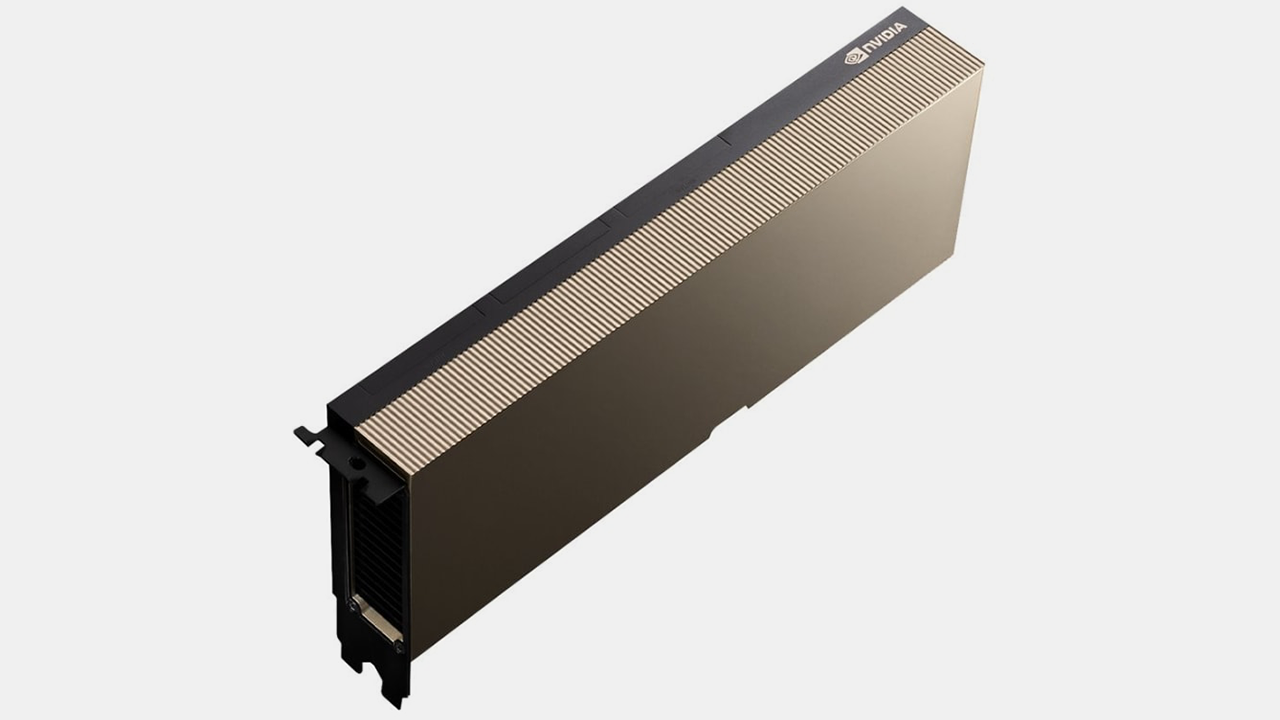Nvidia's A800 Compute GPU Price Jumps 20% on Export Fears
Fears of new export restrictions drive up prices of Nvidia's hardware.

Following rumors that the U.S. government may ban sales of on high-end compute GPUs to China, the price of of Nvidia's A800 chips on the Chinese market has surged in a big way. The price jumped by a whopping 20% in just two weeks, according to a report from DigiTimes.
The standard price of Nvidia's A800 compute GPU in the PCIecard form-factor was around CNY90,000 (US$12,400) per unit just two weeks ago. Right now, the price is approaching CNY110,000 (US$15,000) per unit, which is a 20% increase.
The issue of inflated chip prices, alongside a pressing shortage of computational power in China, have drawn attention at the World Artificial Intelligence Conference 2023. Acquiring high-end AI chips via official routes in China has become increasingly difficult. And as a result, Chinese technology firms that need computing power have resorted to utilizing cloud computing services provided by companies like Amazon AWS and Microsoft Azure. These services are typically used for large language model training tasks, with data centers situated in Singapore or China.
Chen Pei, vice president of Vibranium Consulting, stated that leasing cloud GPU computational power is notably costlier than constructing own GPU computing clusters, with prices for large cloud providers hovering around $2 to $3 per hour per GPU. Echoing this, Sun Jin from CloudWalk Technology, a Chinese AI and computer vision firm, disclosed that Chinese companies are often left with no option but to bear the high costs of leasing cloud computing power. This comes despite these costs being 50-100% higher than establishing their own datacenters.
However, the ability of Chinese vendors to continue using U.S.-based cloud computing services such as AWS and Azure in the future is uncertain, as this will depend on the regulatory steps taken by the U.S. government, which could involve the necessity for licenses or even a complete ban.
China's computing industry faces multiple significant challenges, including the time-consuming process of building AI computing clusters, difficulties in procuring high-end AI chips from abroad, and a shortage of domestically produced AI chips, such as Biren's BR104 and BR100. In light of the potential limitations on accessing European and U.S. cloud computing power, there is a rising expectation for Chinese semiconductor manufacturers to focus solely on refining their chip manufacturing processes and to make progressive strides in software innovation.
| Row 0 - Cell 0 | Biren BR104 | Nvidia A800 | Nvidia A100 | Nvidia H100 |
| Form-Factor | FHFL Card | FHFL Card (?) | SXM4 | SXM5 |
| Transistor Count | ? | 54.2 billion | 54.2 billion | 80 billion |
| Node | N7 | N7 | N7 | 4N |
| Power | 300W | ? | 400W | 700W |
| FP32 TFLOPS | 128 | 13.7 (?) | 19.5 | 60 |
| TF32+ TFLOPS | 256 | ? | ? | ? |
| TF32 TFLOPS | ? | 109/218* (?) | 156/312* | 500/1000* |
| FP16 TFLOPS | ? | 56 (?) | 78 | 120 |
| FP16 TFLOPS Tensor | ? | 218/437* | 312/624* | 1000/2000* |
| BF16 TFLOPS | 512 | 27 | 39 | 120 |
| BF16 TFLOPS Tensor | ? | 218/437* | 312/624* | 1000/2000* |
| INT8 | 1024 | ? | ? | ? |
| INT8 TFLOPS Tensor | ? | 437/874* | 624/1248* | 2000/4000* |
Get Tom's Hardware's best news and in-depth reviews, straight to your inbox.

Anton Shilov is a contributing writer at Tom’s Hardware. Over the past couple of decades, he has covered everything from CPUs and GPUs to supercomputers and from modern process technologies and latest fab tools to high-tech industry trends.